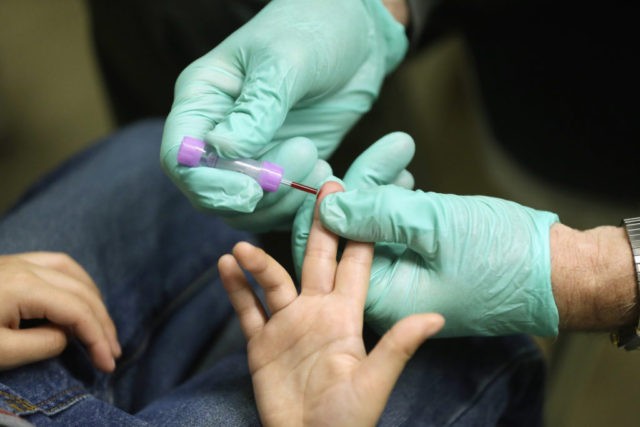A new study conducted by an environmental watchdog found that nearly 800, or 71 percent, of Texas public and charter schools tested contained some degree of lead in drinking water.
This report was prompted by last year’s lead contamination crisis which erupted in the public drinking water supply of Flint, Michigan.
“Our kids deserve safe drinking water at school,” said Luke Metzger the director of Environment Texas, the nonprofit that tested lead toxicity levels of drinking water in 779 of the state’s public and charter schools. They identified schools around the state that tested with high lead levels. For example, they found that in the Houston Independent School District School for the Performing and Visual Arts showed lead at 95.6 part per billion (ppb); Edison Middle School came in at 466 ppb.
“We want to give parents, teachers, and school administrators the tools they need to ‘get the lead out,’” added Metzger, referencing the advocacy campaign’s toolkit that reported on health risks associated with pipes, plumbing, and fixtures that contain lead.
Earlier this year, they examined drinking water on 594 other campuses in Austin, Houston, Dallas, and Fort Worth. The organization blasted 386 of these facilities for having lead levels greater than 1 ppb, the lead concentration level recommended by the American Academy of Pediatrics.
Although the U.S. Environmental Protection Agency (EPA) lists its maximum contaminant level goal for lead at zero, they actually recommend no more than 20 ppb of lead in school drinking water. Most Texas school districts follow the more restrictive measure of 15 ppb applied to municipal water systems, according to KDFW.
The average age of public schools built in the state is 34.5 years, according to a 2008 Texas Comptroller’s Office report. It underscored these older facilities “may have some elements that are detrimental to the students’ health, like asbestos, lead pipe, and mold.” At the time, builders and plumbers largely used lead pipes in new construction and repair on fixtures as well as in public water systems. However, the metal often leached into the water supply upping toxicity levels.
In 1974, the U.S. Congress passed the Safe Drinking Water Act to minimize contaminant particulates in drinking water. They finally banned the use of lead in 1986.
The Texas Education Agency (TEA) confirmed for Breitbart Texas there are 1,022 independent and common school districts plus 181 charter operators in the state, totaling 1,203 districts overall. This translates into 8,685 campuses where the state educates more than 5 million students who may drink from water fountains.
The EPA noted there is no federal law requiring testing of school drinking water, except for roughly 8,000 around the country that operate their own public water system and require compliance under the Safe Drinking Water Act. This year, state Democrats, Representative Nicole Collier of Fort Worth and Senator Sylvia Garcia from Houston, filed legislation to mandate such public school water testing. Neither bill gained traction in either chamber of the Texas Legislature.
The EPA’s 1989 Lead Ban: Preventing the Use of Public Water Systems and Plumbing Used for Drinking Water noted: “All people are susceptible to the dangers of lead contamination…Children are particularly sensitive because their bodies are still developing and they absorb and retain more lead than adults.” This report stated that, for children, even very low levels of lead exposure could result in reduced I.Q. levels, impaired learning and language skills, loss of hearing, and reduced attention spans and poor classroom performance. The agency said higher levels could damage the brain and central nervous systems.
Follow Merrill Hope, a member of the original Breitbart Texas team, on Twitter.

COMMENTS
Please let us know if you're having issues with commenting.